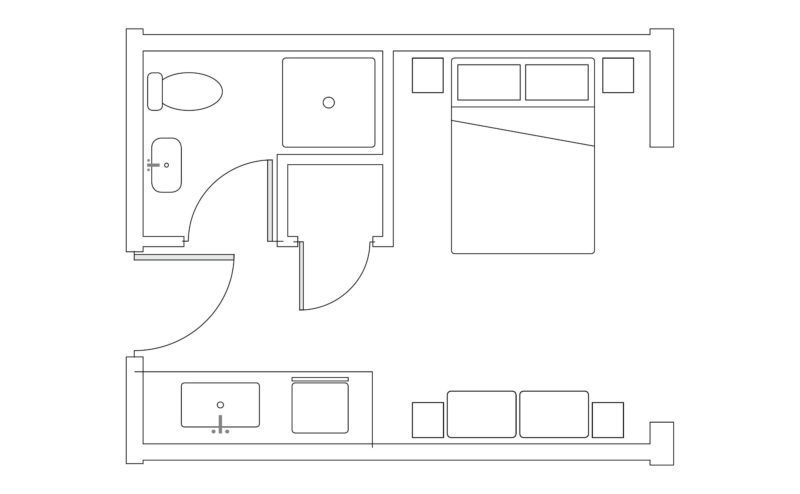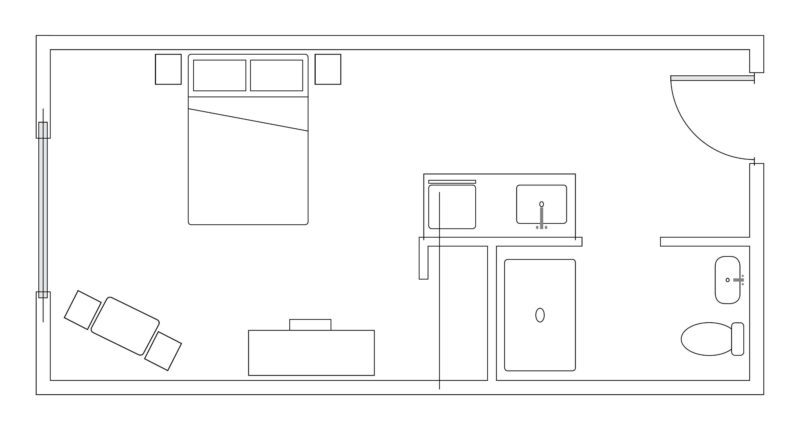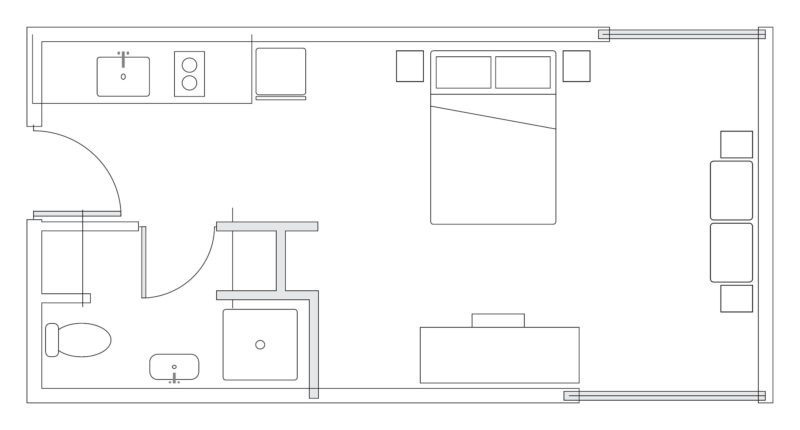Small units are hardly a new solution to creating affordable apartments in Seattle – single-room occupancy (SRO) buildings sprang up in the city over a century ago. Yet, it’s only been in the last decade that they’ve become somewhat notorious among developers, residents, neighbors, and, of course, the City Council.
“Micro” served as an umbrella term for small units popularized by the Footprint and aPodment brands in Seattle in 2009. But as regulations for micros were enacted and the landscape for developing small units changed, a new term emerged: efficiency.
Currently, are three types of efficiency apartments in Seattle:
- Congregate
- Micro Studios
- Small Efficiency Dwelling Units (SEDUs)
So how do you define each type, and which types can still be developed in Seattle?
1. Congregate

Description: A type of housing that has a private sleeping room and typically a bathroom, but is not a complete dwelling unit and may share a bathroom, common kitchen, dining room, and facilities with other units.
Size:
- Standard: 140–200 SF
- Average: 175 SF
- Minimum: 70 SF
Development Status: Allowed in Certain Zones
2. Micro

Description: An apartment or townhouse dwelling unit consisting of no more than eight sleeping suites (private room with private bath) and one common kitchen or kitchen/lounge.
Size:
- Standard: 150–250 SF
- Average: 200 SF
- Minimum: 90 SF
Development Status: Not Allowed (Since 2014)
3. SEDU

Description: A very compact conventional studio apartment, complete with cooking and bathing facilities and closet space. The max gross floor area allowed is 320 SF — anything larger is an Efficiency Dwelling Unit (EDU).
Size:
- Standard: 240–320 SF
- Average: 275 SF
- Minimum: 240 SF*
*There is no minimum SEDU size, just minimum living space, which is 120 SF, yielding a 240 SF unit.
Development Status: Allowed
In the mix
The diverse options for small apartments began with developers designing units to accommodate different resident needs.
For example, developers building micro and congregate units aimed to accommodate residents seeking the most affordable unit possible. To do that they made them smaller and minimized the upgrades. These unit types are “just enough” – providing the right tenant a place to live in their favorite neighborhood for $1,000 on average.
SEDUs tend to be a little stickier, attracting tenants who plan to stay more than a year and for more than affordability. These units feel more like home, and there will be higher-end finishes and a few more options like a cooktop, a larger refrigerator, a fold up bed, and a washer and dryer. As a result, rent will be closer to $1,200 – $1,300. Today, SEDUs are crucial ingredients in unit mixes for many market-rate developments.
Looking for the latest and greatest stats on efficiency units? Check our most recent efficiency unit study!

